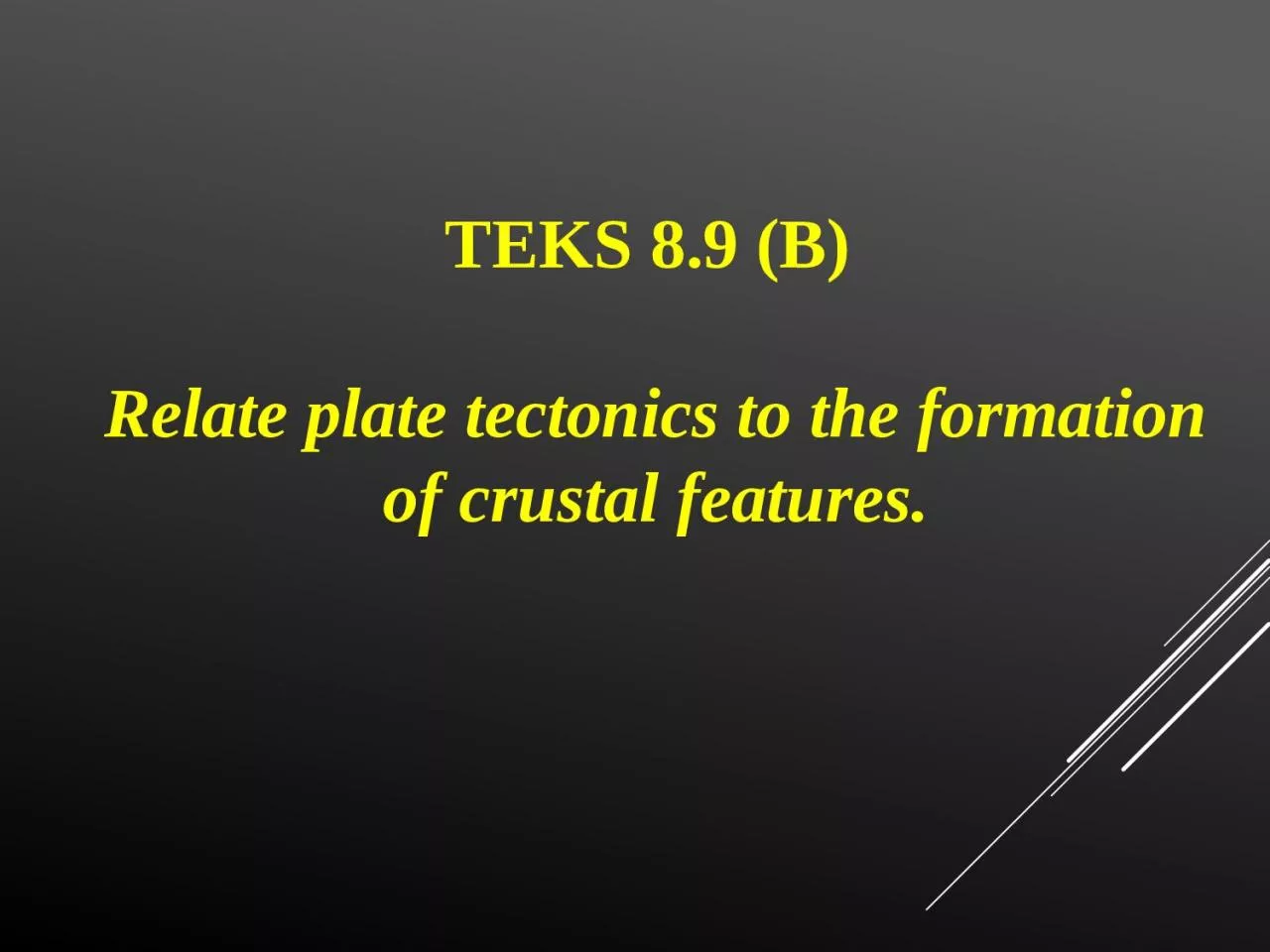

There are three main types of tectonic plate boundaries convergent divergent and transform Types of stress that changes crustal features Stress Directions Compression Rocks are being squeezed ID: 1024494
Download Presentation The PPT/PDF document "TEKS 8.9 (B) Relate plate tectonics to ..." is the property of its rightful owner. Permission is granted to download and print the materials on this web site for personal, non-commercial use only, and to display it on your personal computer provided you do not modify the materials and that you retain all copyright notices contained in the materials. By downloading content from our website, you accept the terms of this agreement.
1. TEKS 8.9 (B) Relate plate tectonics to the formation of crustal features.
2. There are three main types of tectonic plate boundaries: convergent, divergent and transform
3. Types of stress that changes crustal features
4. Stress DirectionsCompression Rocks are being squeezedResult is Mountain formationsTension Rocks are being stretchedResult is Rift Valley & Sea floor spreading Shear ⇄Rocks move in opposite directions and are distortedResults faults
5. Two tectonic plates collide due to compressional forces or stress.Convergent Boundaries
6. Continent-Continent Convergent BoundaryNo new crust is formed or createdAs a result of this boundary folded mountain chains are created such as the Himalaya Mountains.
7. Ocean-Continent Convergent BoundaryTwo plates convergeHeavier plate squeezed downSubductionMelting of old crustRising magma forms new crust in the form of mountains and volcanoesSea TrenchThe Andes Mountains were created as result of this type of plate boundary.
8. Ocean-Ocean Convergent BoundaryAleutian TrenchOld crust is melted and recycled.A deep-ocean trench is a valley on the ocean floor created when an older, denser oceanic plate subducts under a younger, less dense oceanic plate.Volcanic activity is common at this boundary.
9. DivergentBoundary 2 plates move away from one another (“diverge”) due to tensional (pulling) forces or stress.
10. Magma rises up and new crust is formed DivergentBoundary Sea-floor spreadingAs a result of sea floor spreading new crust is formed and mid ocean ridges develop.
11. Mid-Atlantic RidgeIndian RidgeDivergentBoundary
12. DivergentBoundary DivergentBoundary
13. The East African Rift Valley is land that has sunken by divergent boundary
14. Rift Valley in Africa Divergent Boundary
15. two tectonic plates slide past each other due to a shearing force TransformBoundary
16. TransformBoundary Shearing causes faults (weak spots in rocks) and earthquakes.San Andreas fault in California is on a transform boundary.
17. TransformBoundary